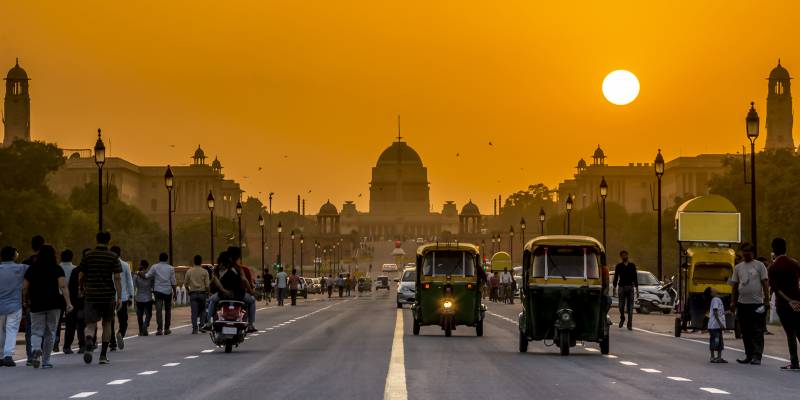
Nadeem F Paracha presents a visual history of South Asia over the centuries.
Modern-day South Asia comprises India, Pakistan, Bangladesh, Sri Lanka, Nepal, Afghanistan, Bhutan, Myanmar and Nepal. It is one of the world’s most densely populated areas, with a population of 1.891 billion, which is almost 25 percent of the world’s total population.
The region also has a vast array of races, religions and languages. These include Hinduism, Islam, Sikhism, Buddhism, Zoroastrianism, Jainism and Christianity. The main languages are Hindi, Urdu, Punjabi, Bengali, Marathi, Nepali, Pali, Sindhi, Balochi, Pashtu, Tamil, Telangu, Guajarati, English and more.
A major part is often referred to as the ‘Indian sub-continent.’ Its present political boundaries were largely marked by the departing British colonialists who ruled the area from the late 18th century till the mid-20th.
For over 5000 years, the region has often moved back and forth from being a tapestry of numerous independent kingdoms and a unified political whole.
2600 BCE till 1900 BCE.
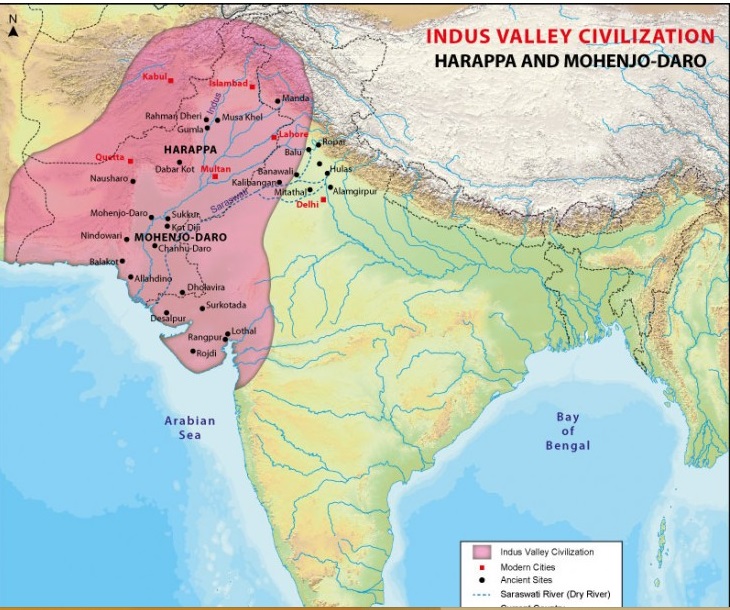
Over 5000 years ago, a Bronze Age civilization in the northwestern region of South Asia was thriving. It was an indigenous, well-organized society, largely settled in areas that today are in Pakistan.
It had its own form of government and religion and a unique language and written script. In the 20th century, archeologists called it the Indus Valley Civilization because it grew along the banks of the mighty Indus River. It is said to have lasted from 2600 BCE till 1900 BCE.
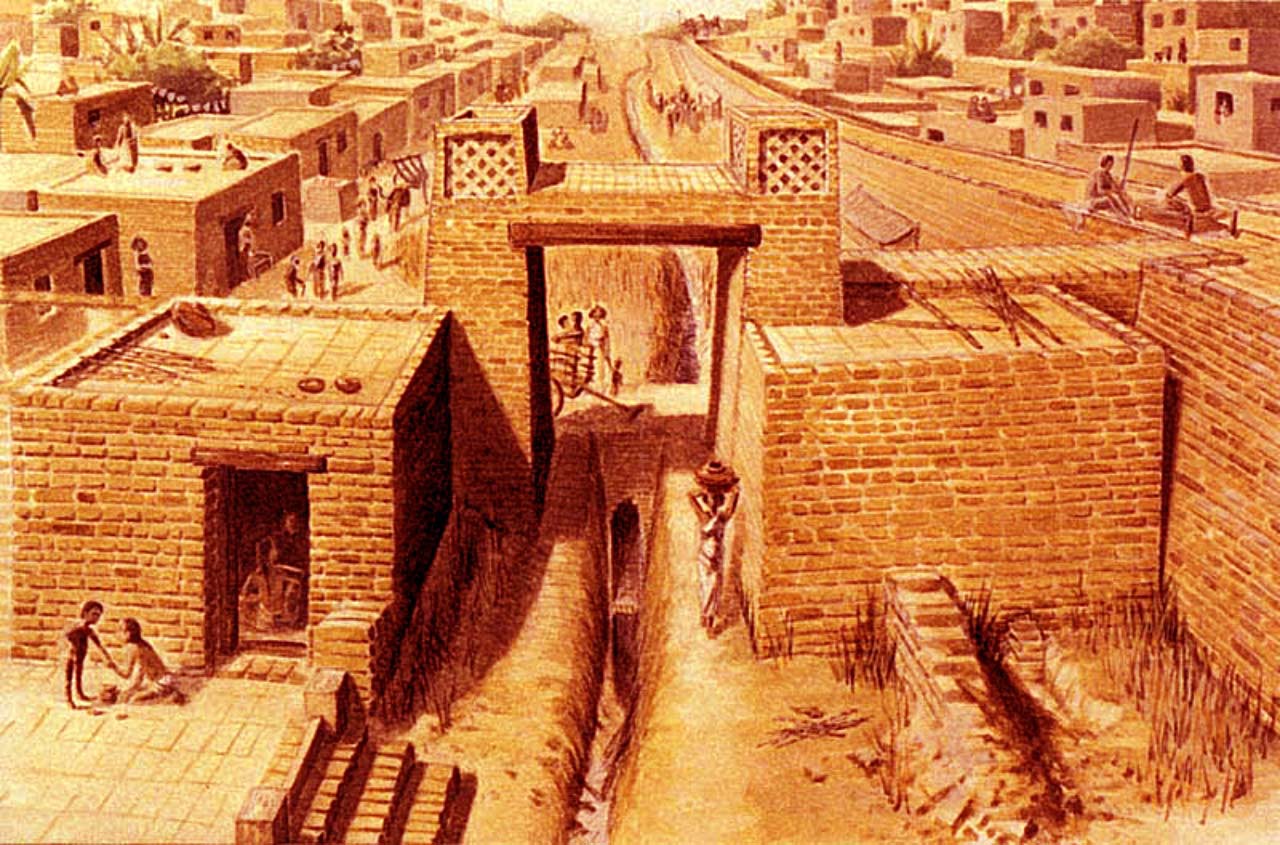
An artist’s depiction of the Indus Valley Civilization.
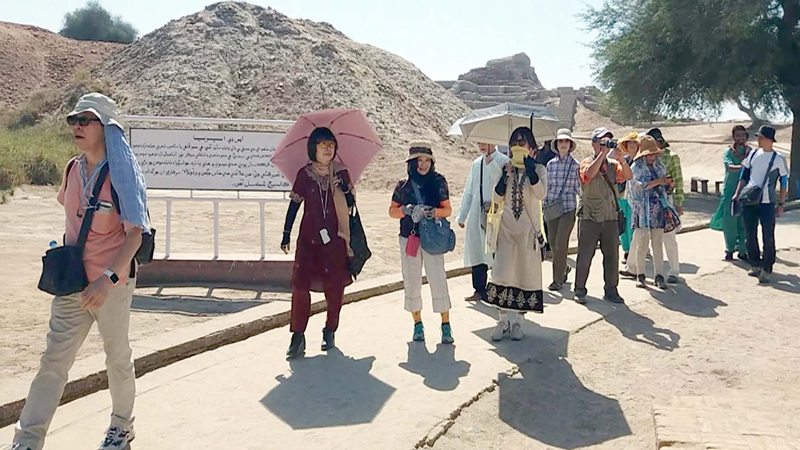
Tourists at one of the sites of the Indus Valley Civilization near the city of Larkana in Pakistan’s Sindh province.
1500 BCE
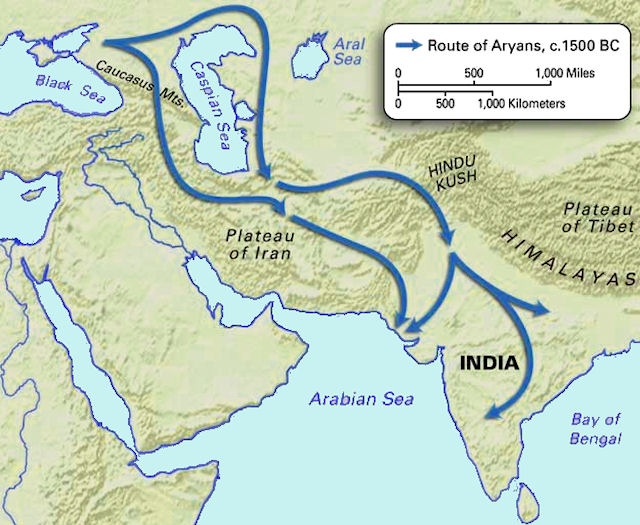
Some 3,500 years ago, peoples from an ethnolinguistic group, the ‘Aryans’, began to migrate from Central Asian regions into the sub-continent. The migrations took place across hundreds of years. They began during the decline of the Indus Valley Civilization.
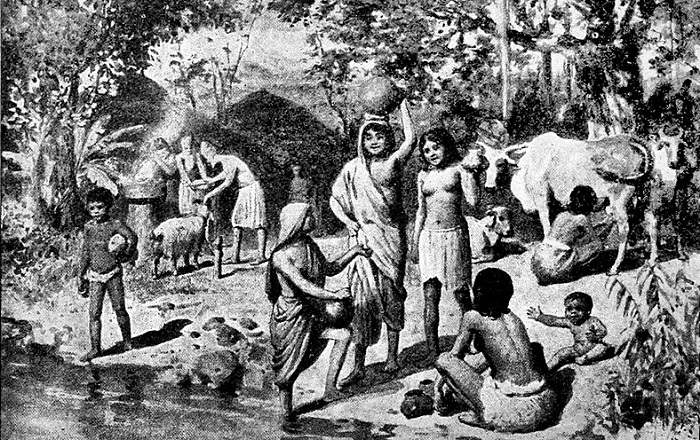
The Aryans came in large groups and initially settled in north-western regions of the sub-continent. With time they relocated near the Ganges Plain and in the northeastern and southern parts of the region. They brought with them their distinct religions and languages. The predominant languages of South Asia today are all considered to be rooted in the languages that the Aryans brought with them.
1750-500 BCE: The Vedic Period
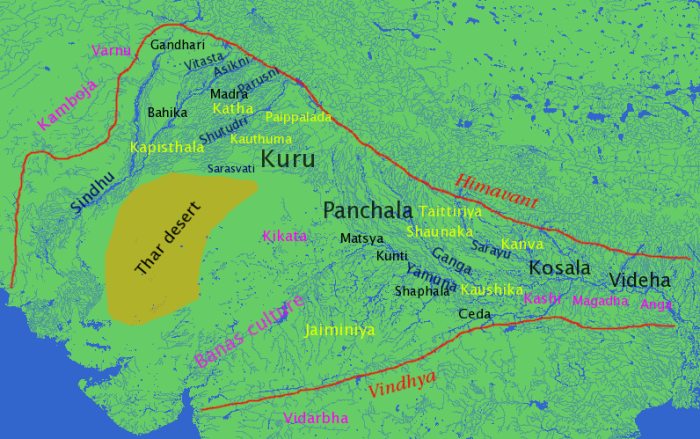
The Vedic Period refers to the time in history from approximately 1750-500 BCE, during which the Aryans settled in the northwestern parts of the sub-continent of what is now northern and eastern India, eastern parts of Pakistan, and most of Bangladesh. The people lived in tribes or small quasi-kingdoms.
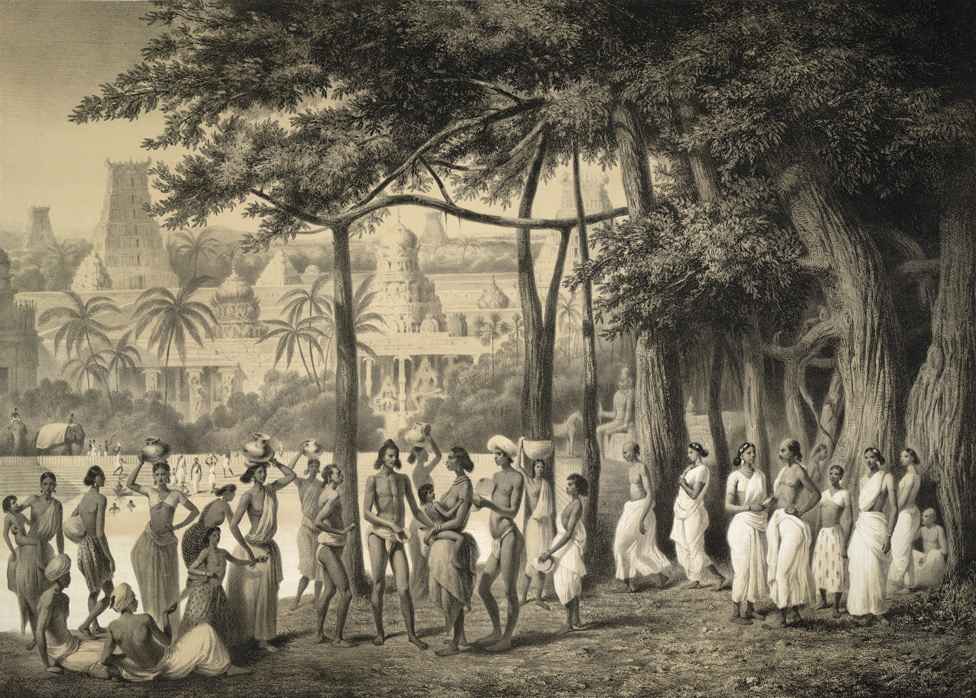
The era is known as Vedic because the understanding and information of this age is derived from certain religious scriptures that were composed during this period. These included Rigveda, Mantra texts, Samhita texts, and Brahmana literature.
Most of these scriptures were about rituals and how the priests should conduct them. They also contained names of various deities which were later incorporated into what became to be known as Hinduism.
The texts do not mention the word Hindu in a religious sense. Instead, these scriptures mention ‘Sindhu,’ which is the Indus River.
Also, cow worship is neither mentioned in the scriptures nor was practiced during this period. The scriptures do mention a caste system, but the castes are defined not by birth but on a person’s profession.
600-300 BCE
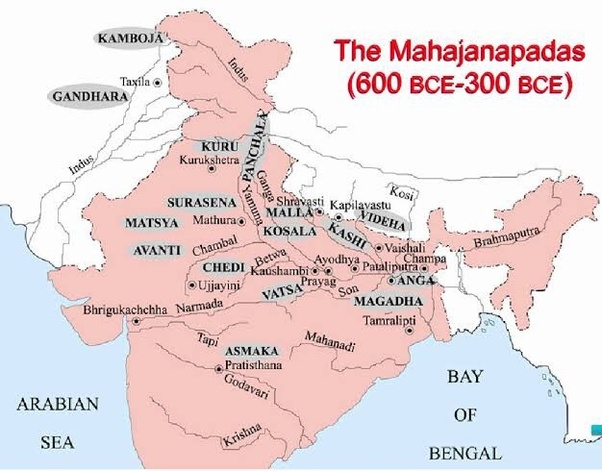
2,500 years ago, in the late Vedic age, a set of sixteen kingdoms emerged. These gave rise to new and permanent areas of settlements called ‘states’ or ‘janapadas.’ Iron production played a crucial role in expanding the territorial states of the region. These expansions helped some of these ‘janapadas’ turn into large states or ‘mahajanapadas.’
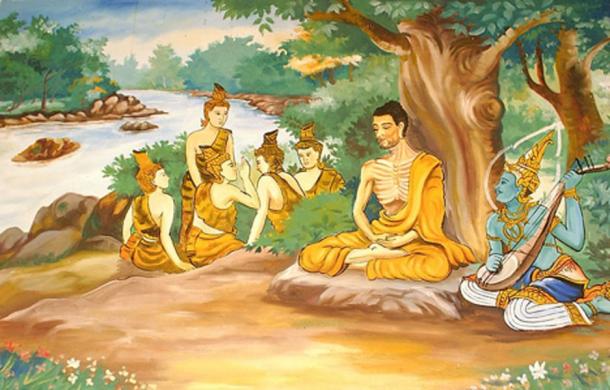
It was during the time of the janapadas that Gautama Buddha was born in what is present-day Nepal. After achieving ‘enlightenment’ he preached a highly esoteric yet simple faith which many historians believe was a reaction against the growing powers of Vedic Brahman priests and the caste system.
500 BCE: The Word ‘Hindu’ Is Formulated.
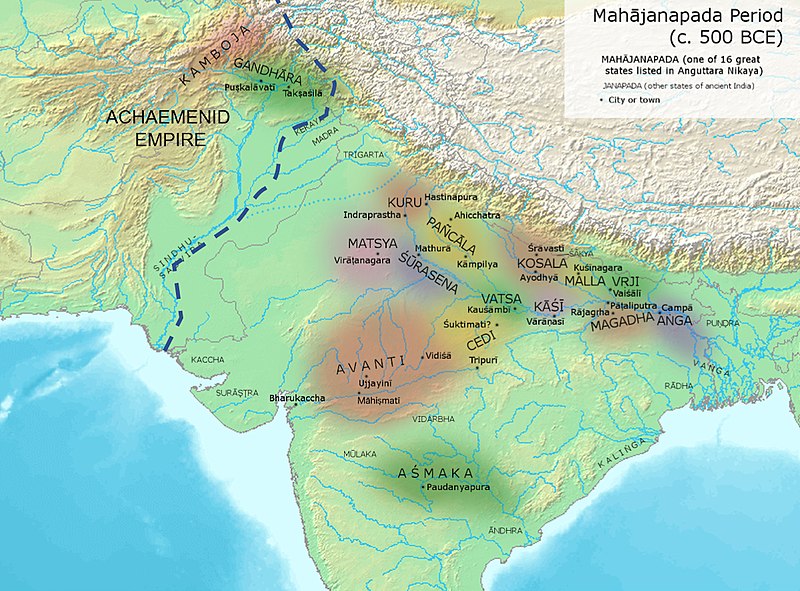
In 500 BCE, the Persians under King Cyrus the Great invaded (from present-day Iran) the northwestern regions of the sub-continent. The Persian Empire (and/or the Achaemenid Empire) held most of regions of what today is Pakistan; whereas the janapadas remained independent.
This was also the period in which the word ‘Hindu’ was formulated. This is what the Persians called River Indus. They pronounced the word ‘Sindhu’ (mentioned in the Rigveda) as ‘Hindu.’ By this they meant the river and the people who lived on the banks of this river. The Persians were Zoroastrians and they brought this faith with them to the sub-continent.
326 BCE
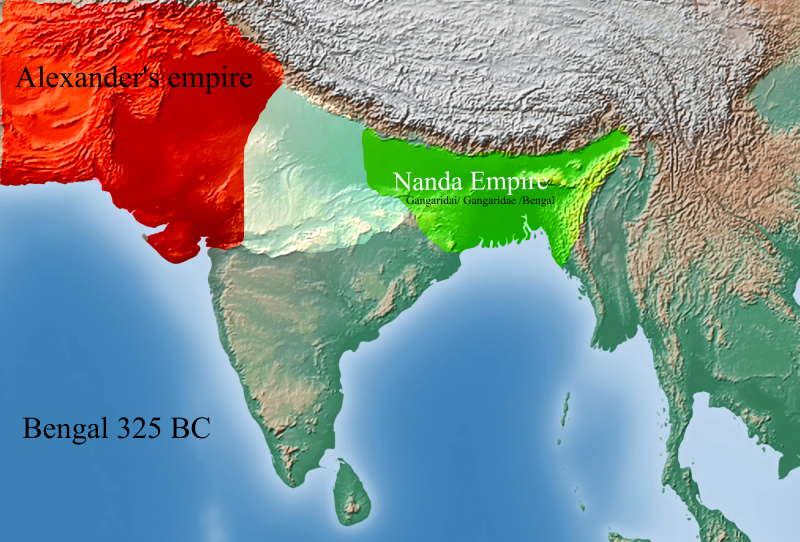
The Greek warrior-king, Alexander the Great invaded the sub-continent (through present-day Afghanistan) after defeating the mighty Persian Empire. Alexander conquered regions of what today are the KP, Punjab and Sindh provinces in Pakistan. The other major power in South Asia at the time was the Nanda Empire in Bengal.
265 BCE
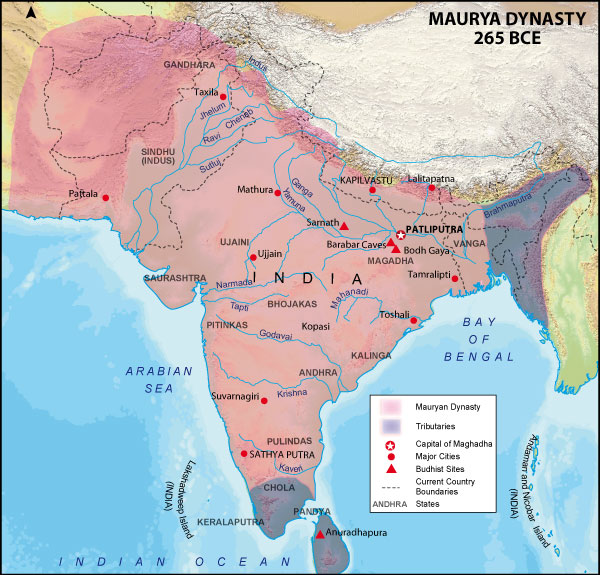
After Alexzander’s retreat, one Chandragupta Maurya raised an army and vanquished the Nanda Empire. He set up his own Maurya Empire. The empire lasted from 321 BCE till 298 BCE.
It was under the Maurya Empire that, for the first time, almost all of South Asia, especially the sub-continent, was brought and unified under a single empire.
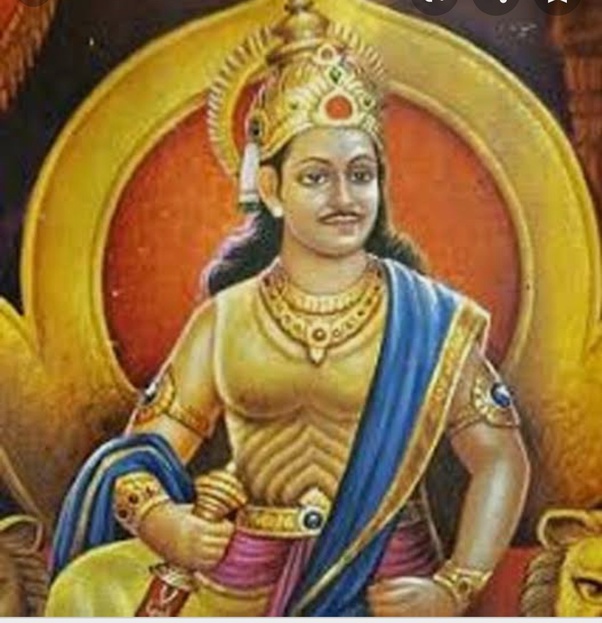
Asoka was the mightiest Mauryan monarch. The Mauryans were Bahamans, but Chandragupta is said to have converted to Jainism, and Asoka to Buddhism. In fact, it was under Asoka that Buddhism became a major religion in the region.
2nd Century CE.
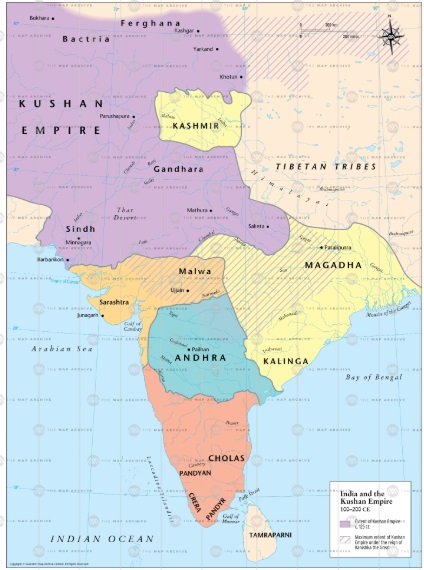
1,800 years ago (2nd Century CE) South Asia was divided between various kingdoms. Much of what is today Afghanistan and Pakistan was under the Kushan Empire. The Kushan people originated from China. It was a syncretic empire that fused Hellenistic Greek culture with Buddhism. Rest of the region was ruled by various Hindu empires.
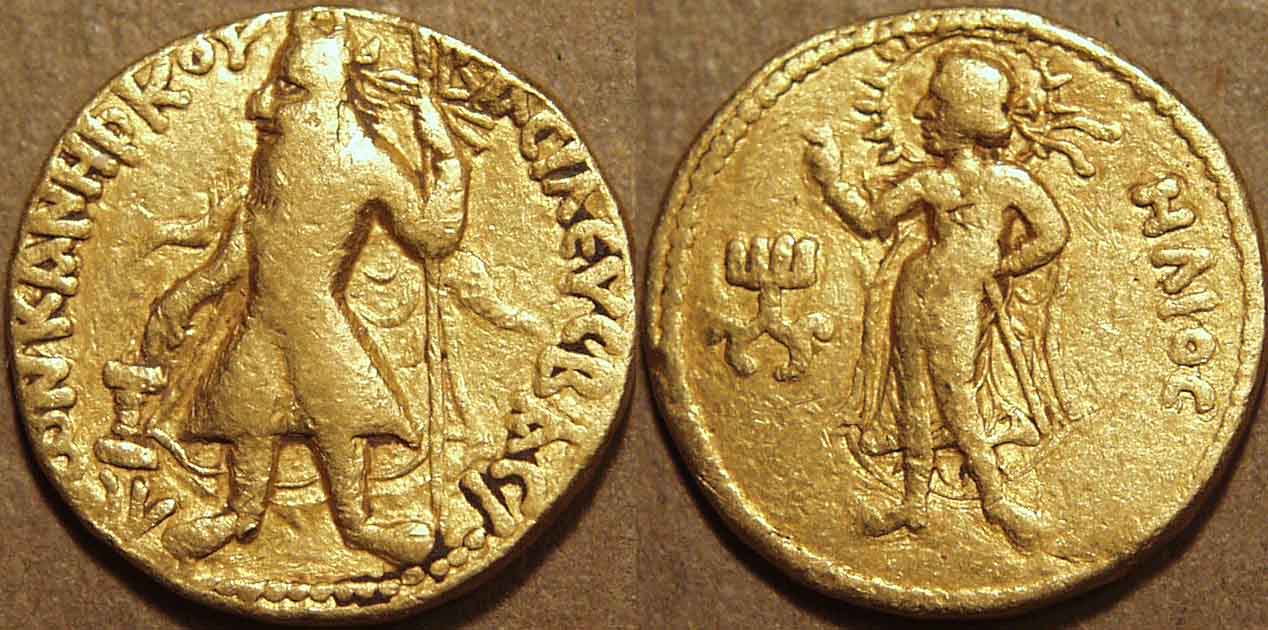
Coins issued by the iconic Kushan kings, Kanishka.
5th Century CE
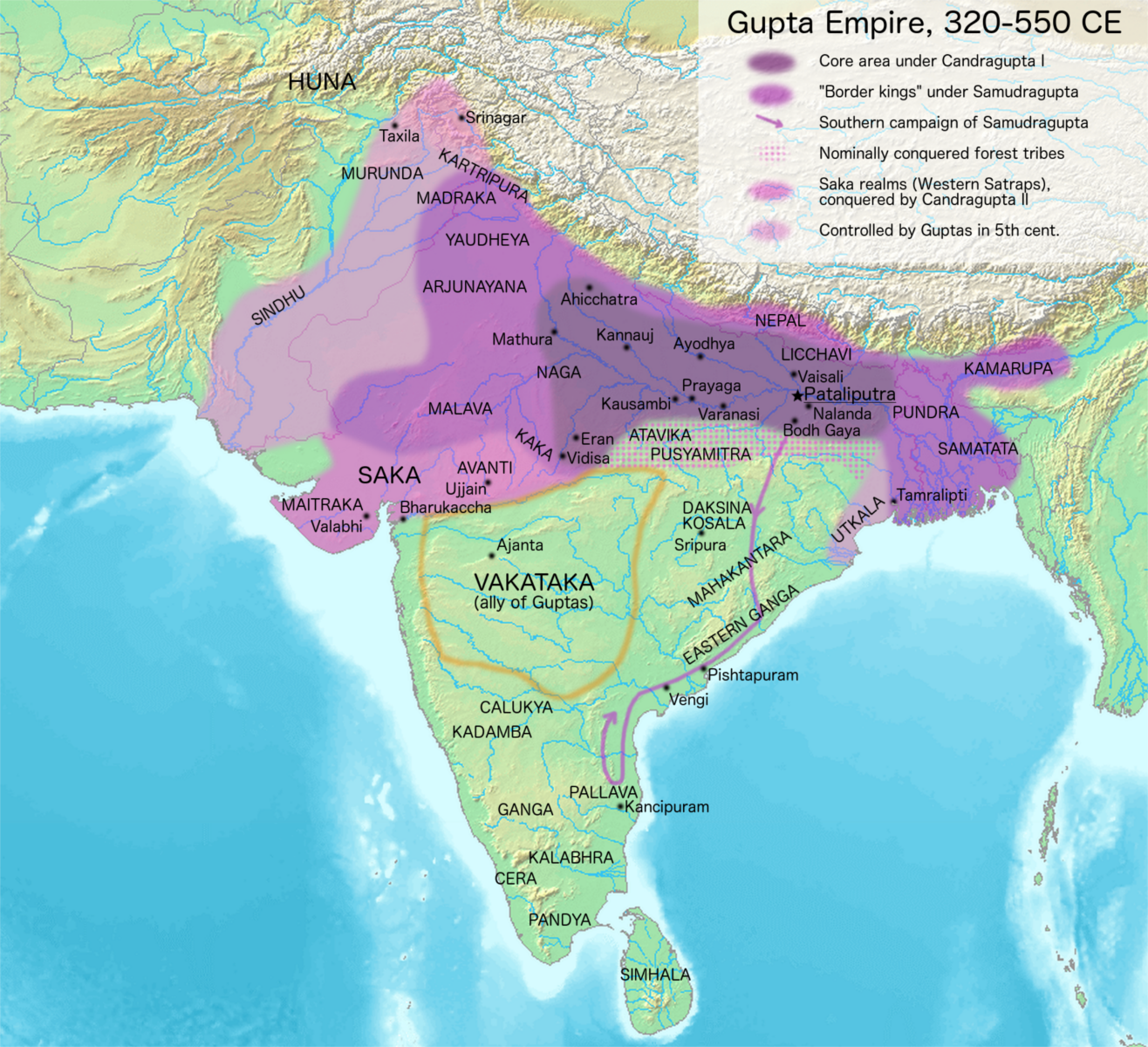
From the mid-3rd Century till the 5th, the Gupta Empire ruled much of the sub-continent. Rest of the region was ruled by smaller fiefdoms. Hinduism, Buddhism and Jainism were the major religions in the region at the time -- even though by now orthodox Hinduism that had evolved from Vedic Brahmanism had rebounded from the beating it had received from the spread of Buddhism.
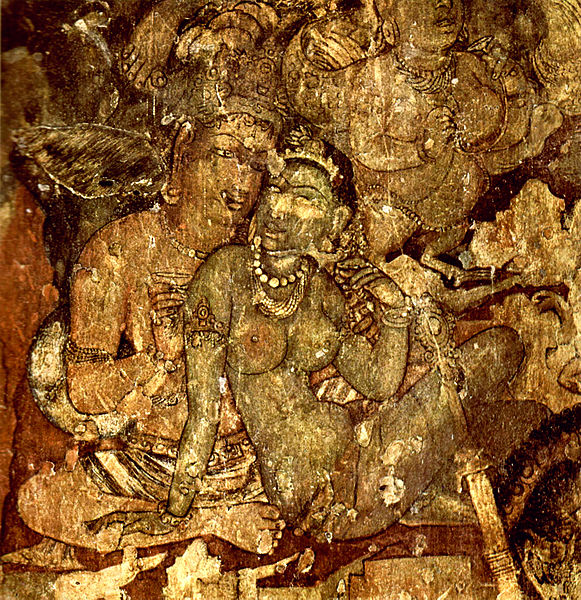
A Gupta-era painting showing a man and a woman (possibly lovers and/or husband-wife).
7th Century CE
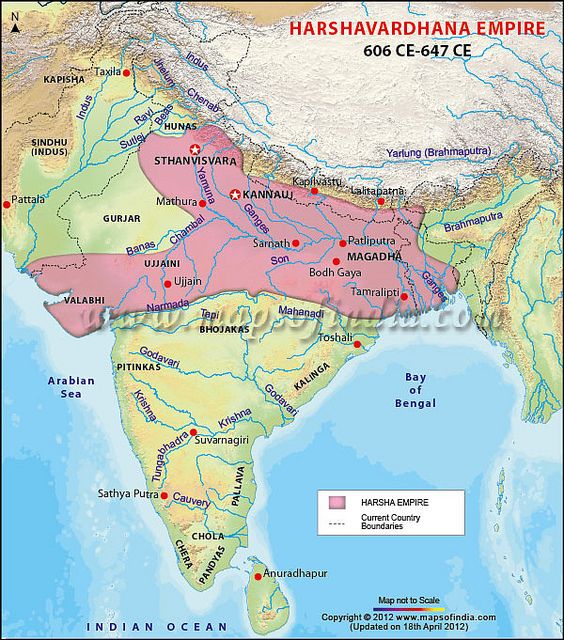
By the 7th Century, a large portion of the sub-continent in the north and north-west was ruled by Pushyabhuti/Harsha Empire. The dynasty was religiously eclectic and included sun worshippers, Buddhists and a form of Hinduism shaped by the cult of the Vedic Hindu deity, Shiva. Rest of the region was in the hands of smaller dynasties.
700 CE
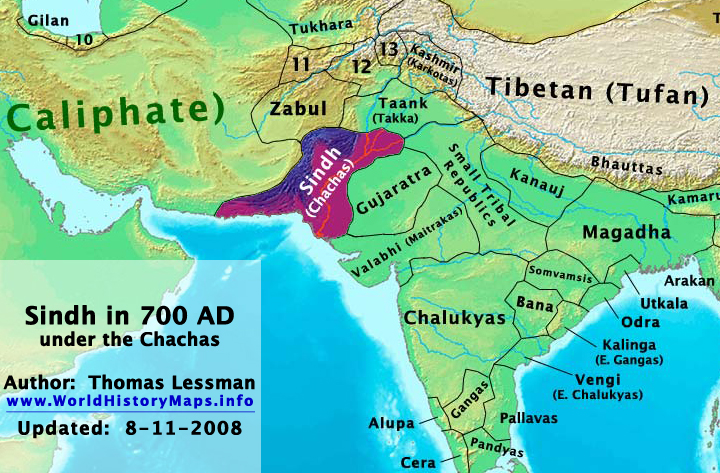
South Asia map a decade before Arab Umayyad general, Muhammad Bin Qasim’s invasion of Sindh in 710 CE. Like the rest of the region, Sindh at the time was being ruled by a Brahman dynasty. Qasim, however, did not march further and Muslim influence in South Asia remained limited to Sindh.
14th Century
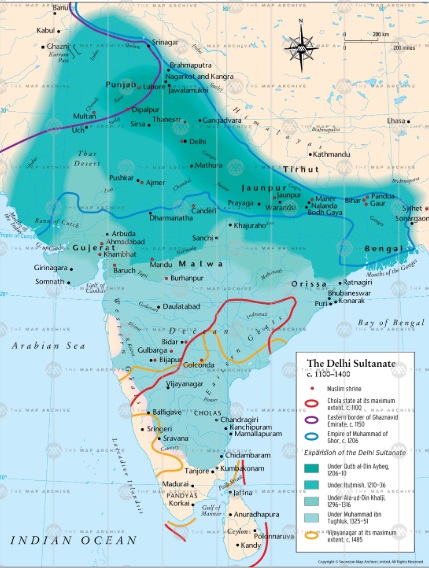
In the 12th Century, the subcontinent was invaded by Turkic soldiers and slaves who had been converted to Islam and had risen to become rulers. For over 300 years, Turkic dynasties ruled over a vast area of the region – even though the southern regions of the sub-continent remained in the hands of Hindu kingdoms. The five major Muslim dynasties during this period ruled from Delhi in northern India (therefore the name ‘Delhi Sultanate’).
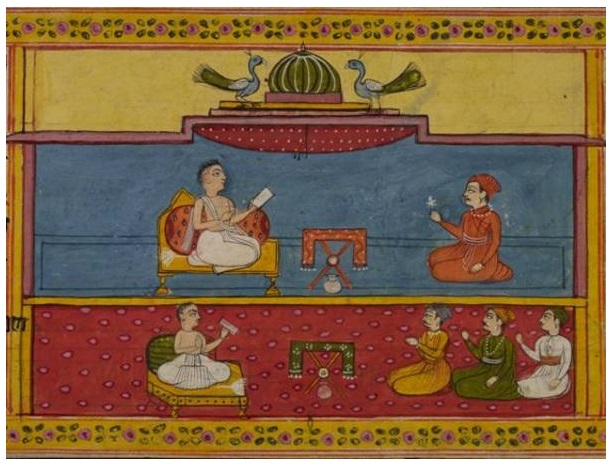
During the rule of Delhi Sultanate, the first major synthesis of traditional sub-continental religious and social cultures (Hindu, Buddhist, Jain, and Zoroastrian) and medieval Muslim culture took place. Sufism also made a prominent entry into the region.
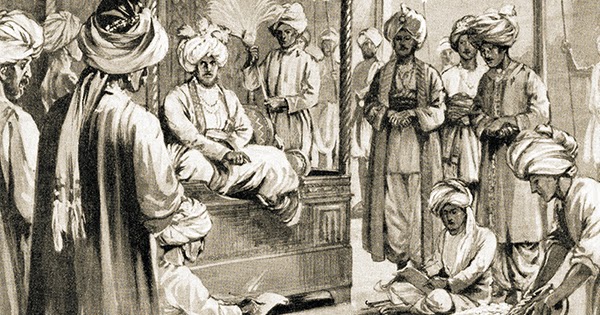
The Delhi Sultanate reached the panicle of its power during the reign of Muhammad Tughlaq. He is often referred to as a mercurial man and the ‘lunatic visionary’ mainly due to some of his economic schemes which latter historians believe were ahead of his time.
1525 CE
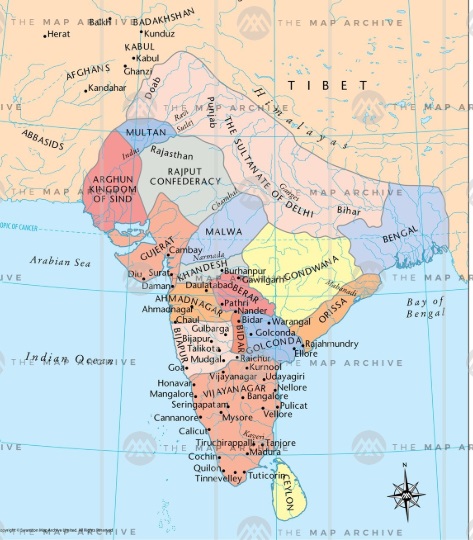
South Asia on the eve of Mughal invasion. The Delhi Sultanate had considerably shrunk, replaced by various Hindu and rebel Muslim kingdoms.
17th Century
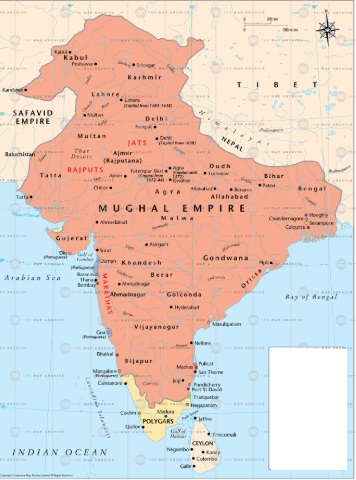
In the 16th Century, Muslim chieftains from Central Asia rode into the sub-continent from Afghanistan to establish the Mughal Empire. By the late 17th Century, the Mughals had unified the region into a political whole just as the Mauryans had done in 265 BCE. Akbar the Great and Aurangzeb are considered to be the mightiest Mughal emperors.
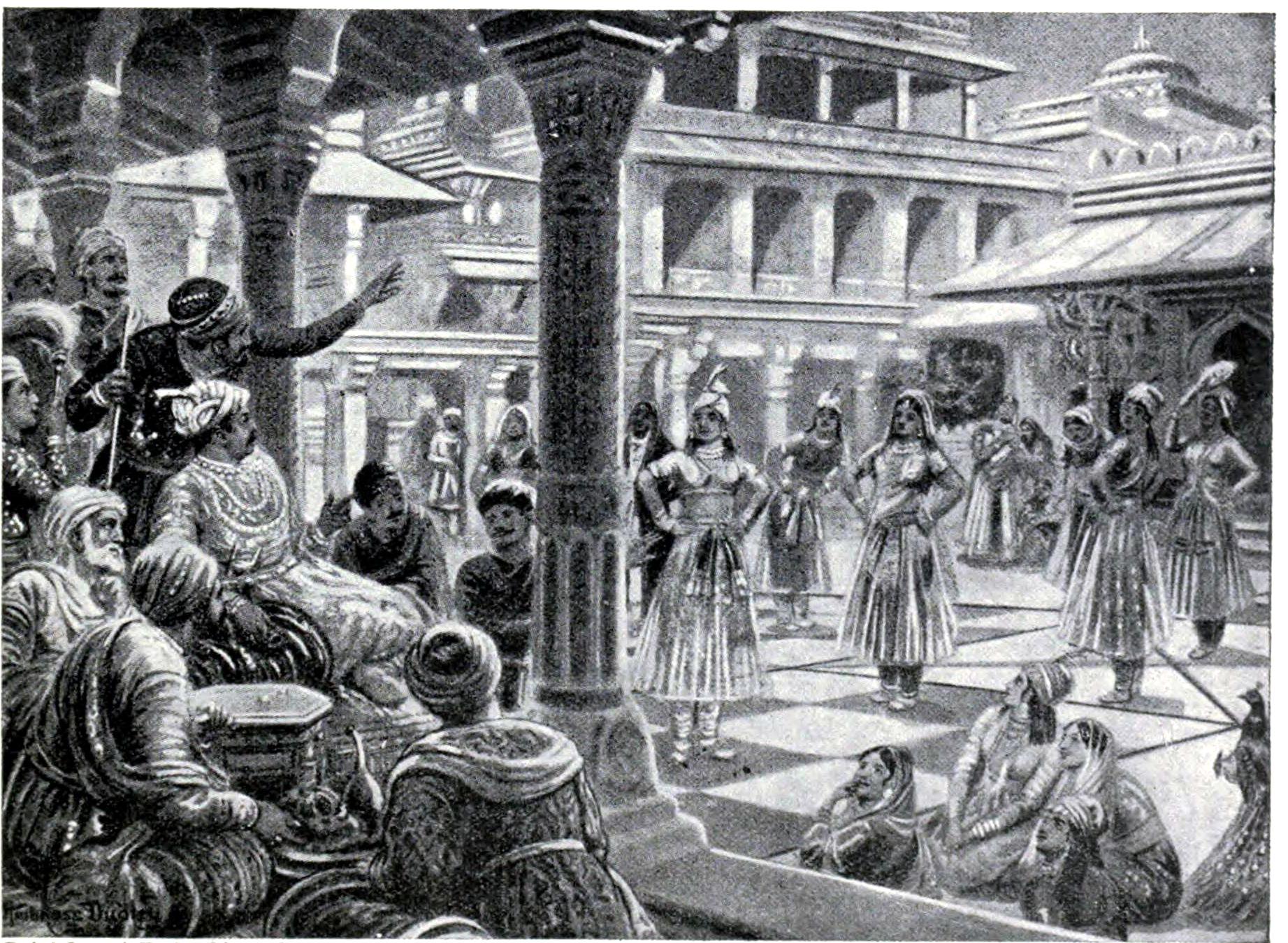
The synthesis between indigenous South Asian cultures and Muslim culture accelerated greatly during the Mughal era. India was considered to be one of the richest countries during Mughal rule. This attracted the attention of European powers who began to send envoys to Mughal courts.
Islam and Hinduism thrived until the coming to power of the last major Mughal king, Aurangzeb. Sikhism emerged as a religion, and Christianity began to find converts among Indians. Sufism in the region reached its peak. There were great strides made in administrative politics, economics, the arts and cuisine.
1764 CE
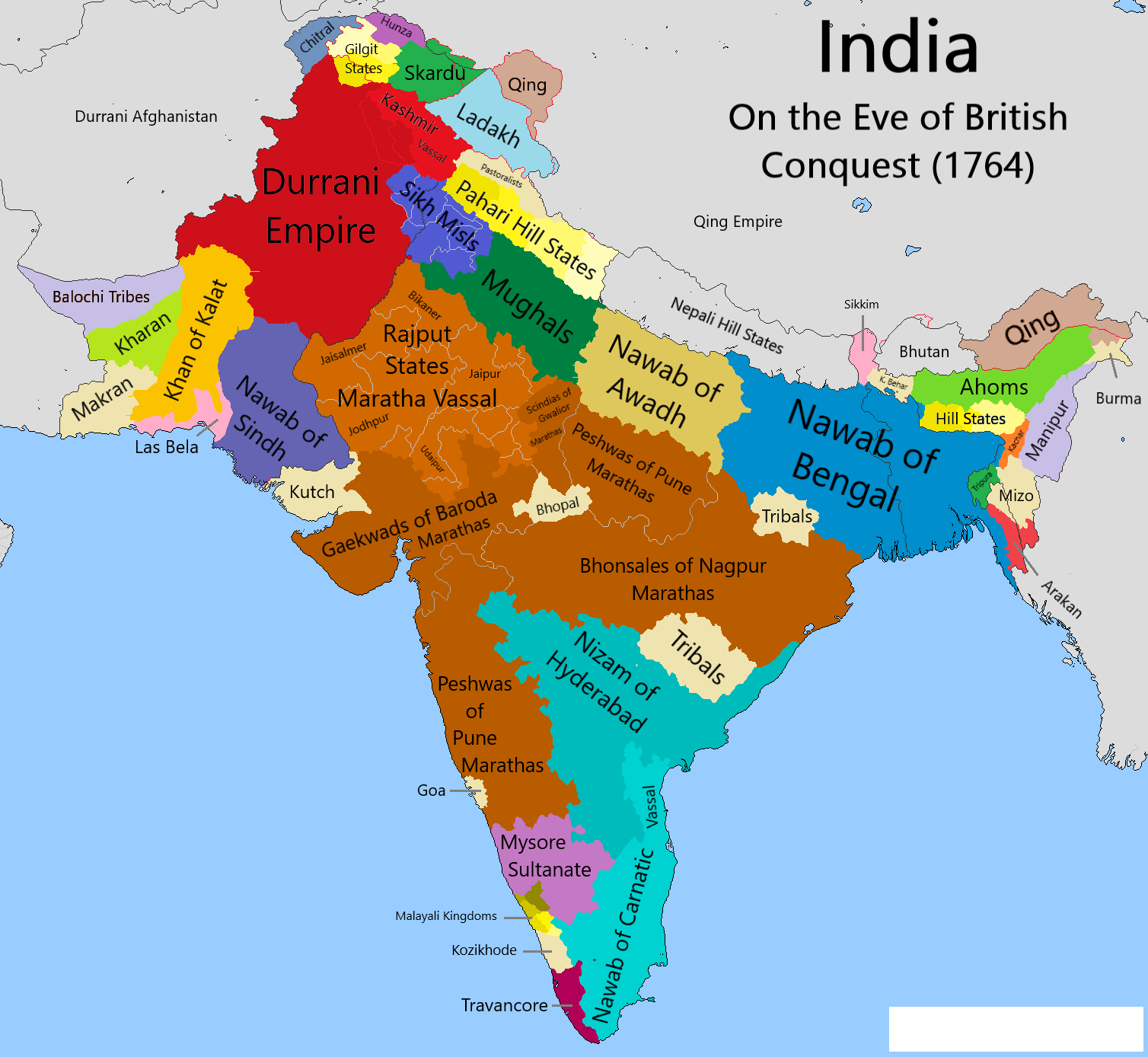
The sub-continent map on the eve of British conquest. By the mid-18th Century, the Mughal Empire had shrunk and regions once under Mughal rule fell in the hands of Hindu, Sikh and non-Mughal Muslim domains.
1914 CE
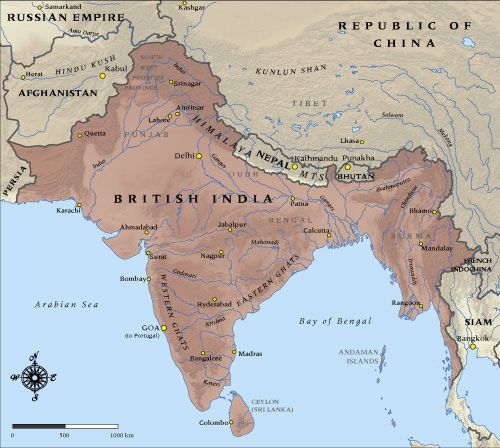
By 1914, almost all of South Asia had come under the rule of the British.
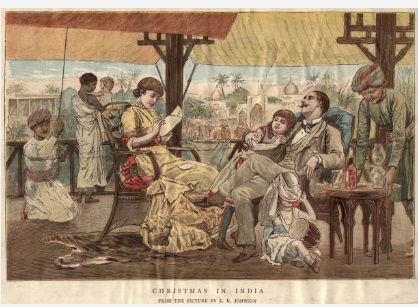
Even though the British practiced a secular brand of politics, Christianity grew two-fold in India during British rule.
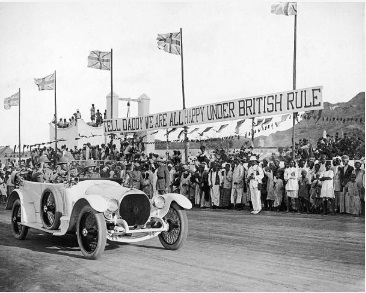
The British introduced modernity in India by remodeling its schools, politics, economics and judiciary.
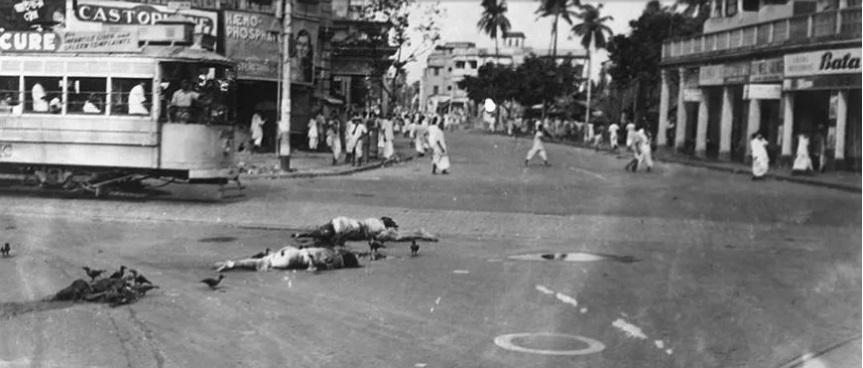
After the 1930s onward, tensions and violence between Muslims, Hindus and Sikhs intensified.
August 1947
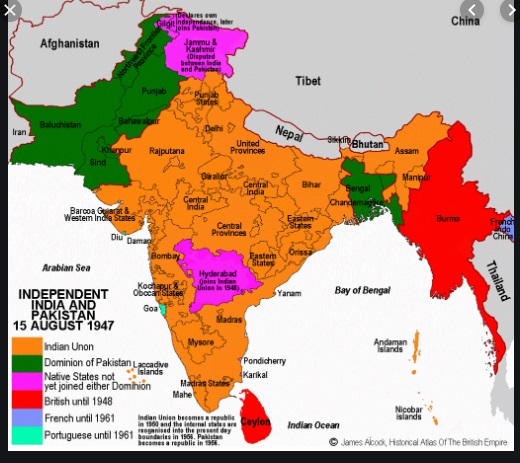
South Asia in August 1947. As the British retreated from the region, they tried to address the growing ‘communal violence’ in India by partitioning it. The Muslim-majority areas became the Dominion of Pakistan and the Hindu-majority regions became the Indian Union. The British monarch was accepted as the figurative head of state by both the regions.
Some Muslim ‘princely states’ within India decided to remain independent but were absorbed into India. The Muslim-majority region of Kashmir was ruled by a Hindu maharaja. He first wanted to remain independent, but soon decided to merge Kashmir with India.
Goa in India remained a domain of the Portuguese till 1961.
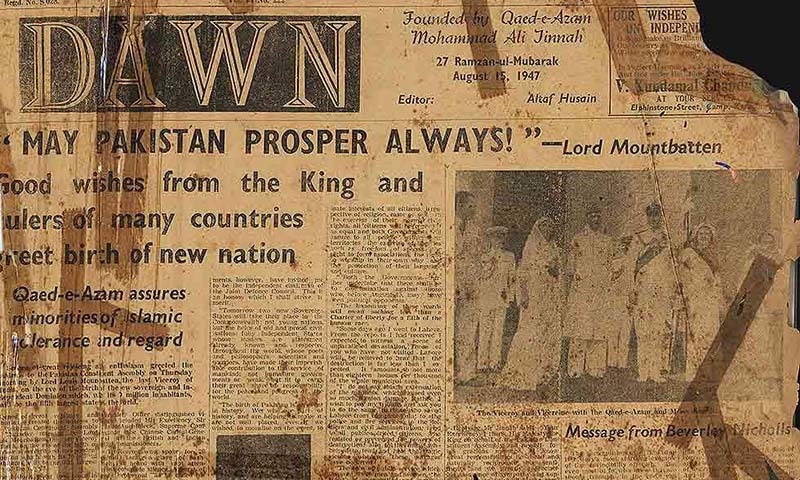
Front page of DAWN on the day after Pakistan came into being.
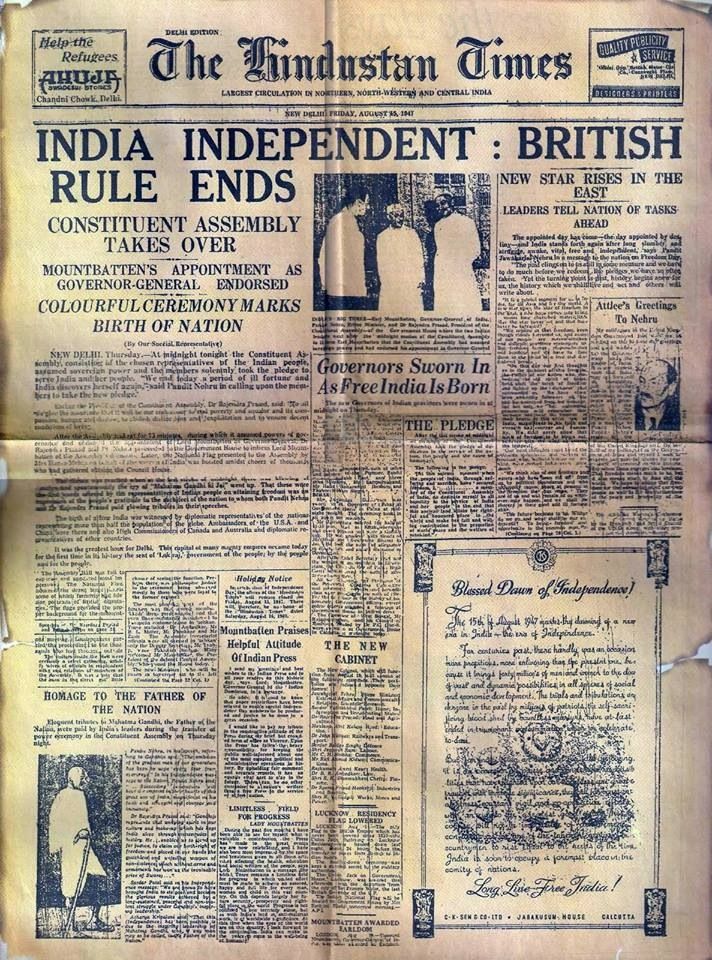
Front page of Hindustan Times.
2020 CE
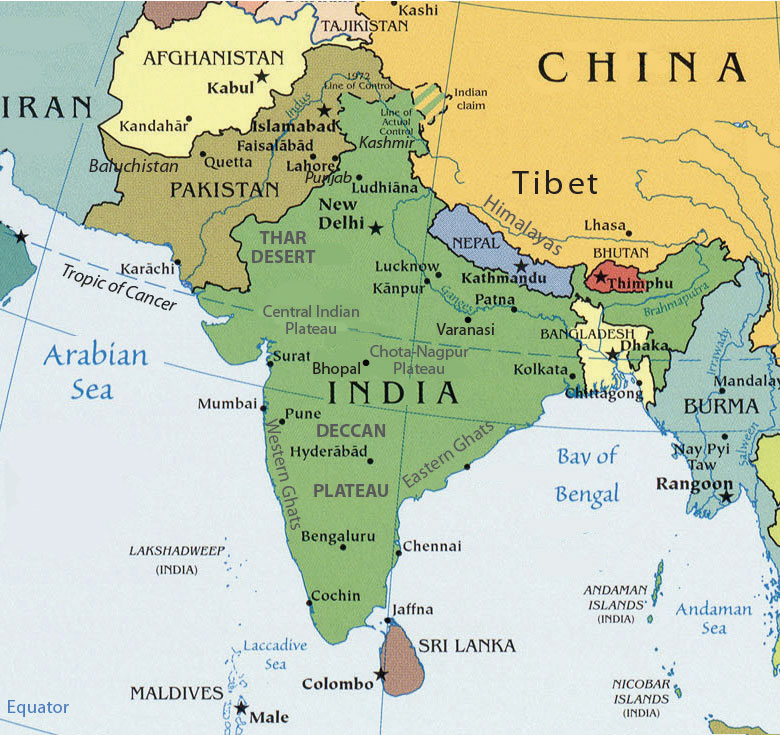
South Asia today consists of independent republics of India, Pakistan, Nepal, Burma (Myanmar), Bhutan, Afghanistan, Sri Lanka, Maldives and Afghanistan. Till 1971, Bangladesh was part of Pakistan but broke away to become a separate country. Kashmir remains to be a disputed area between India and Pakistan.
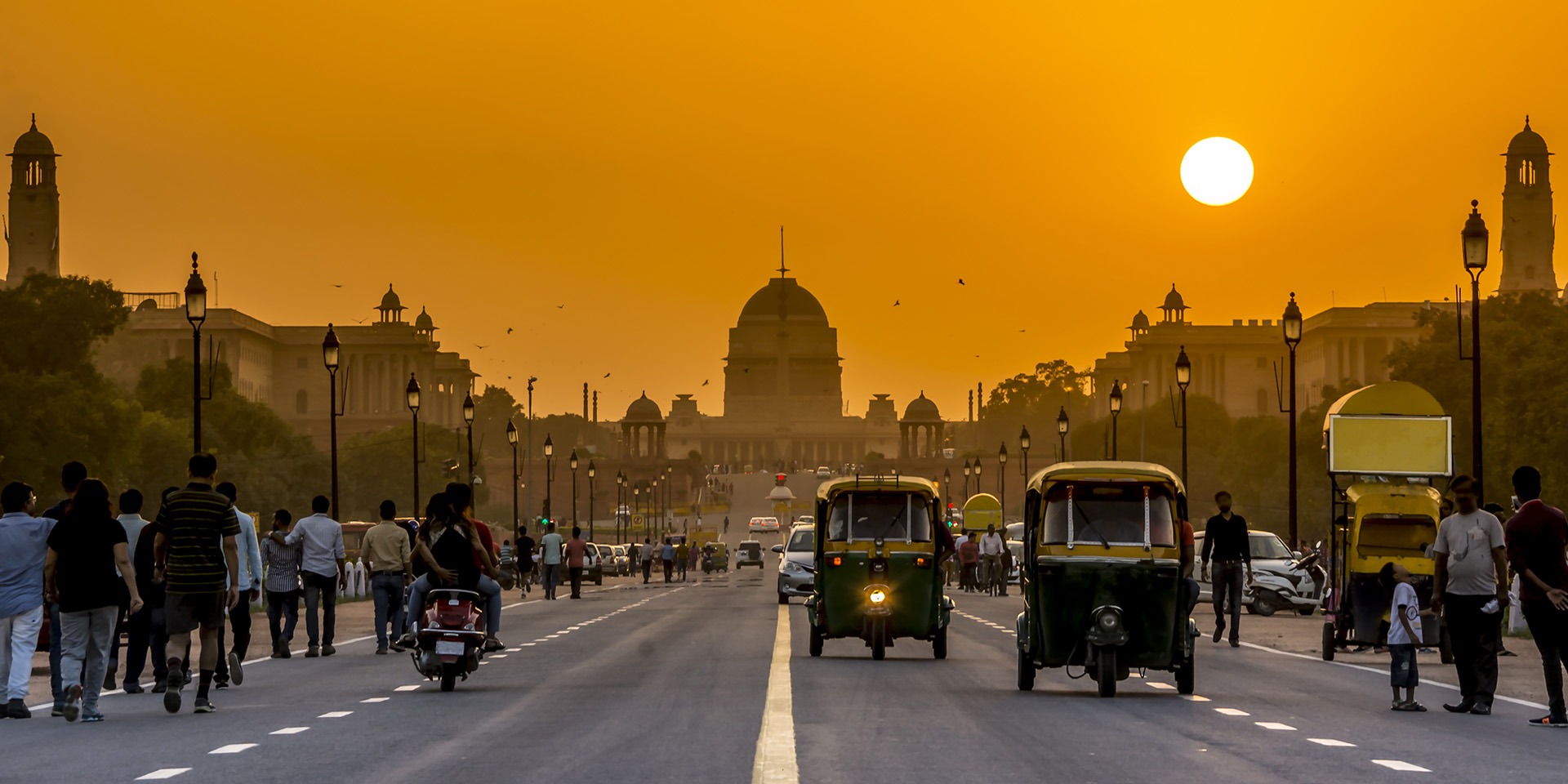
New Delhi: Capital of India.
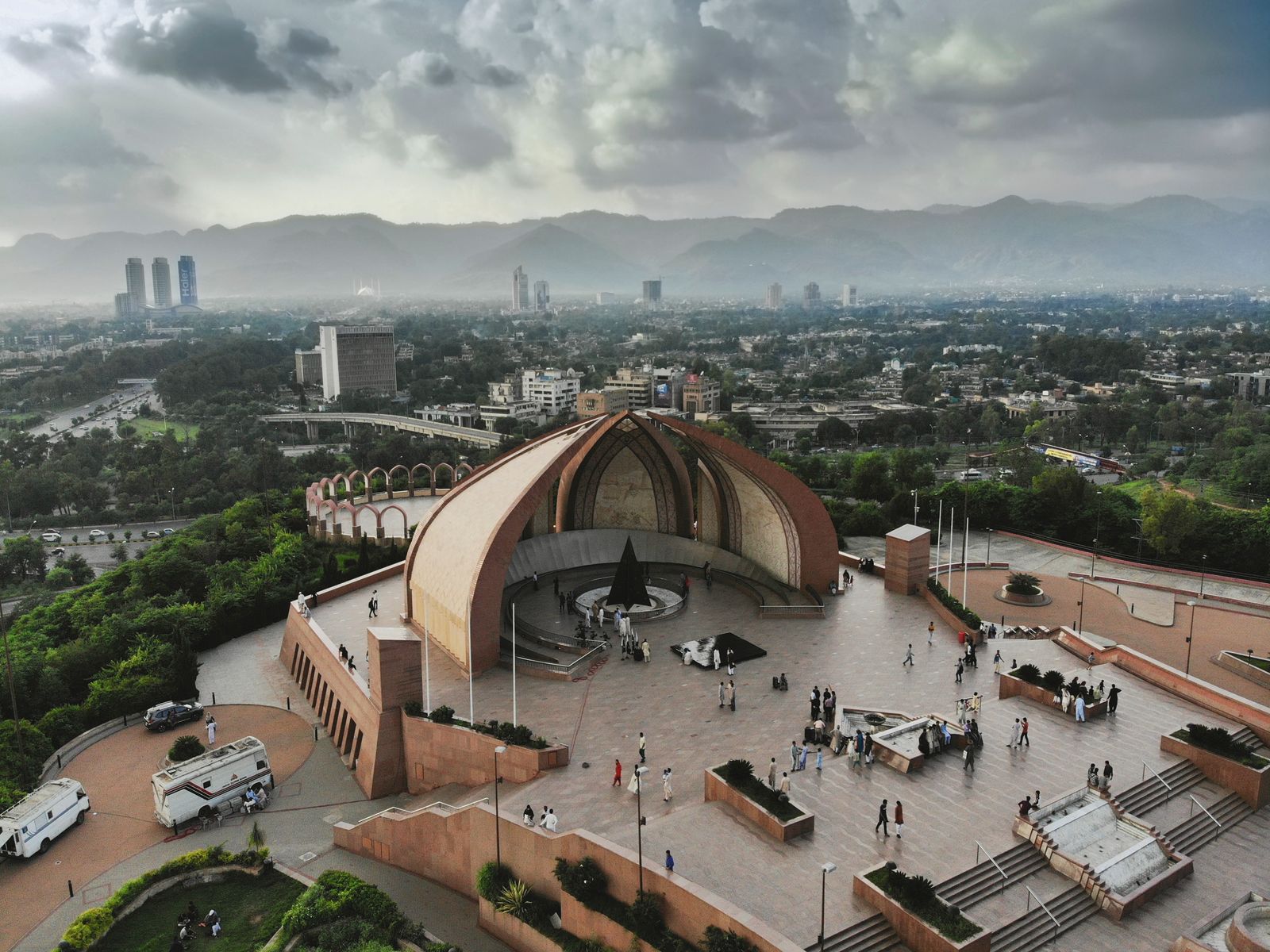
Islamabad: Capital of Pakistan.
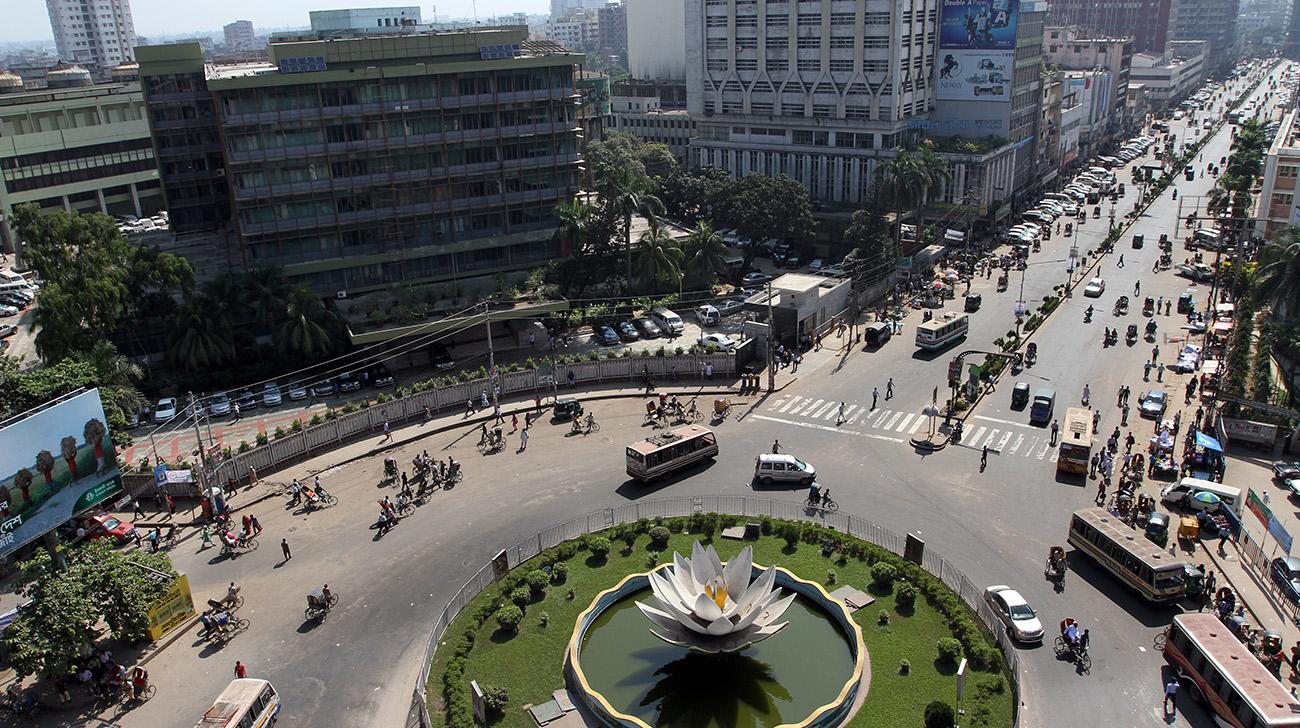
Dhaka: Capital of Bangladesh.
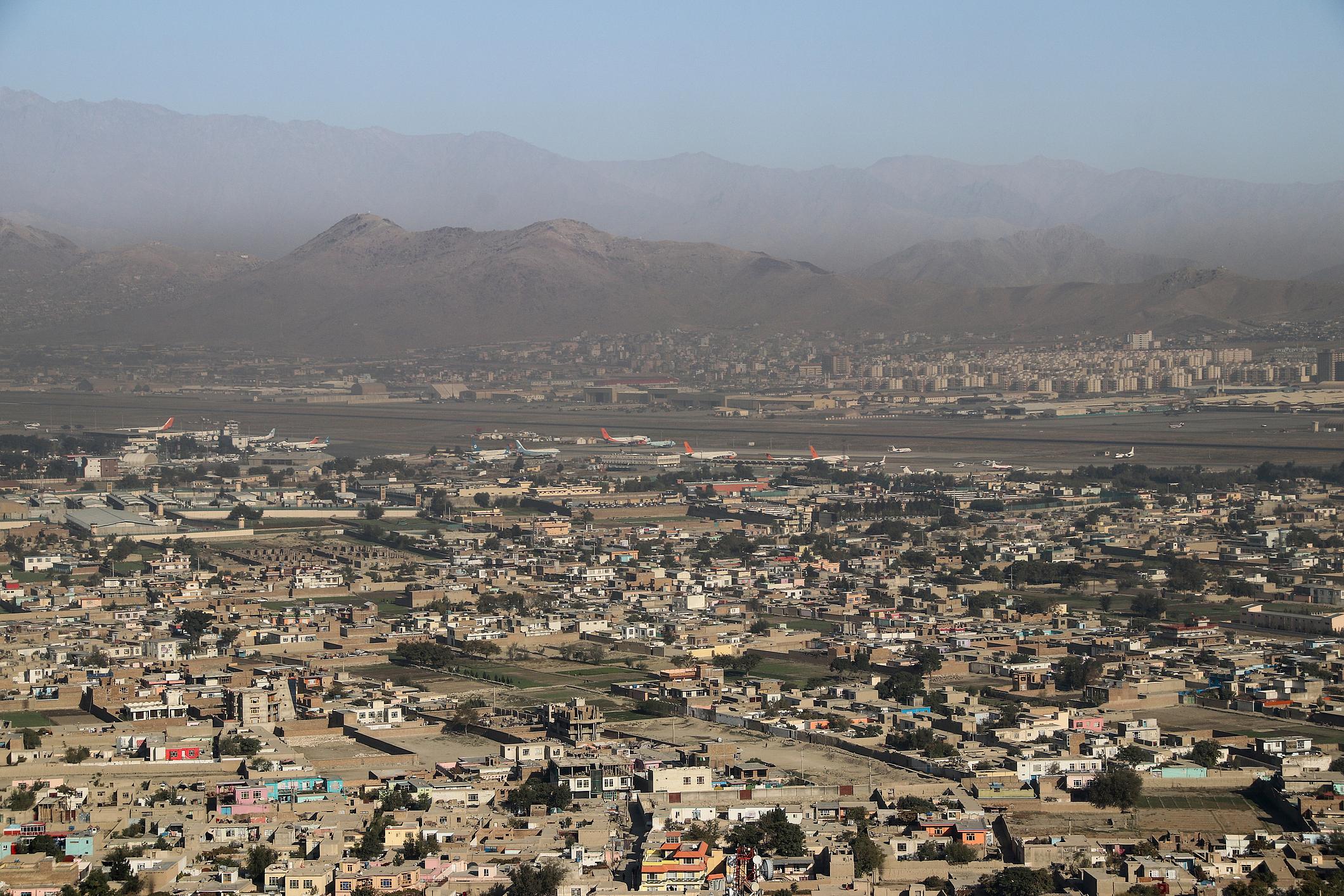
Kabul: Capital of Afghanistan.
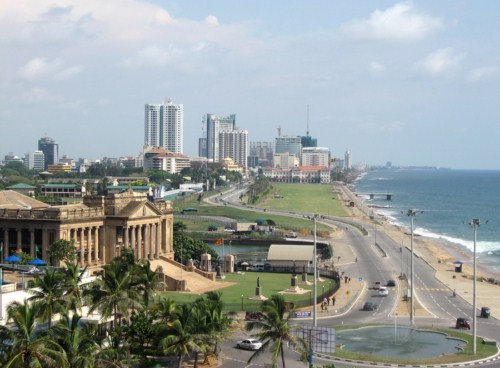
Colombo: Capital of Sri Lanka.
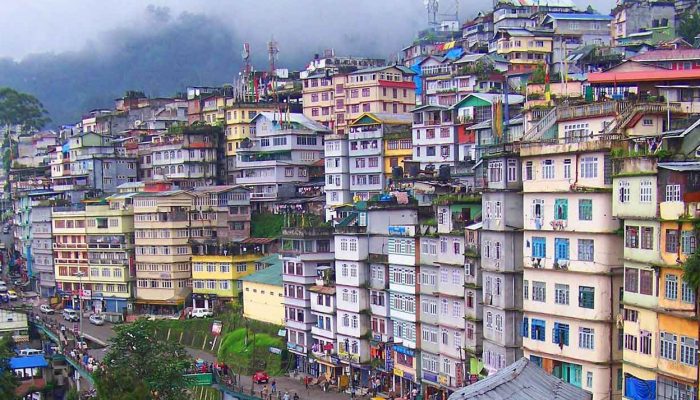
Thimphu: Capital of Bhutan.
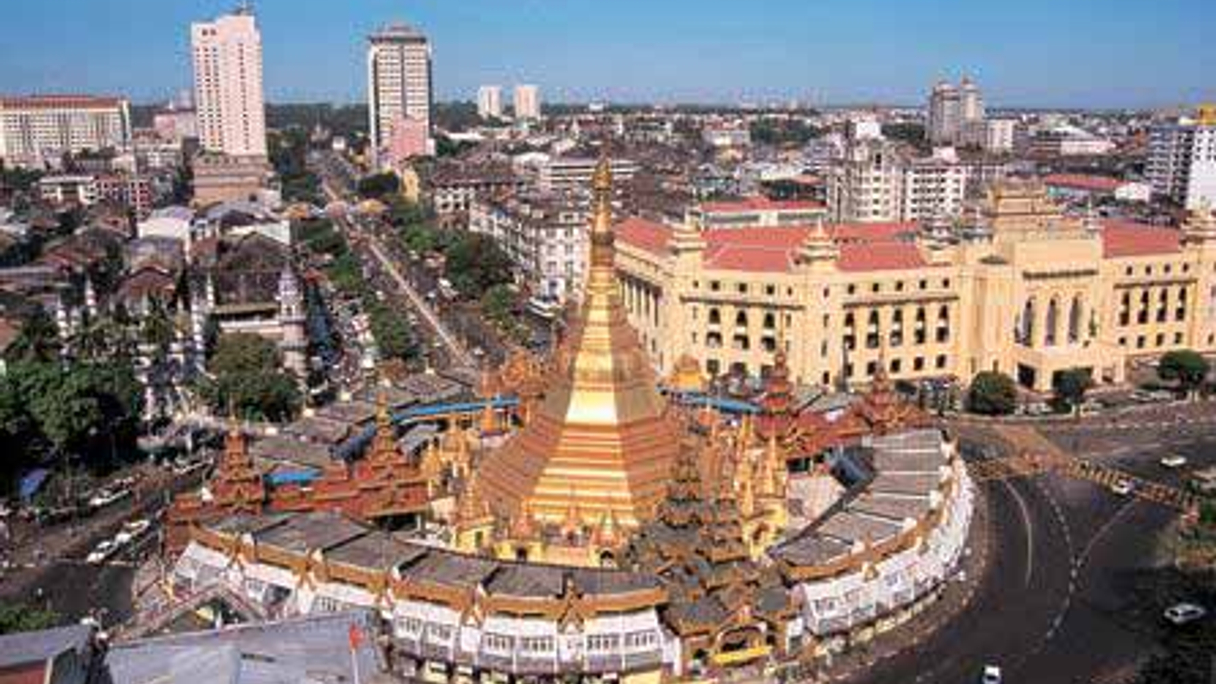
Naypyidaw: Capital of Myanmar.
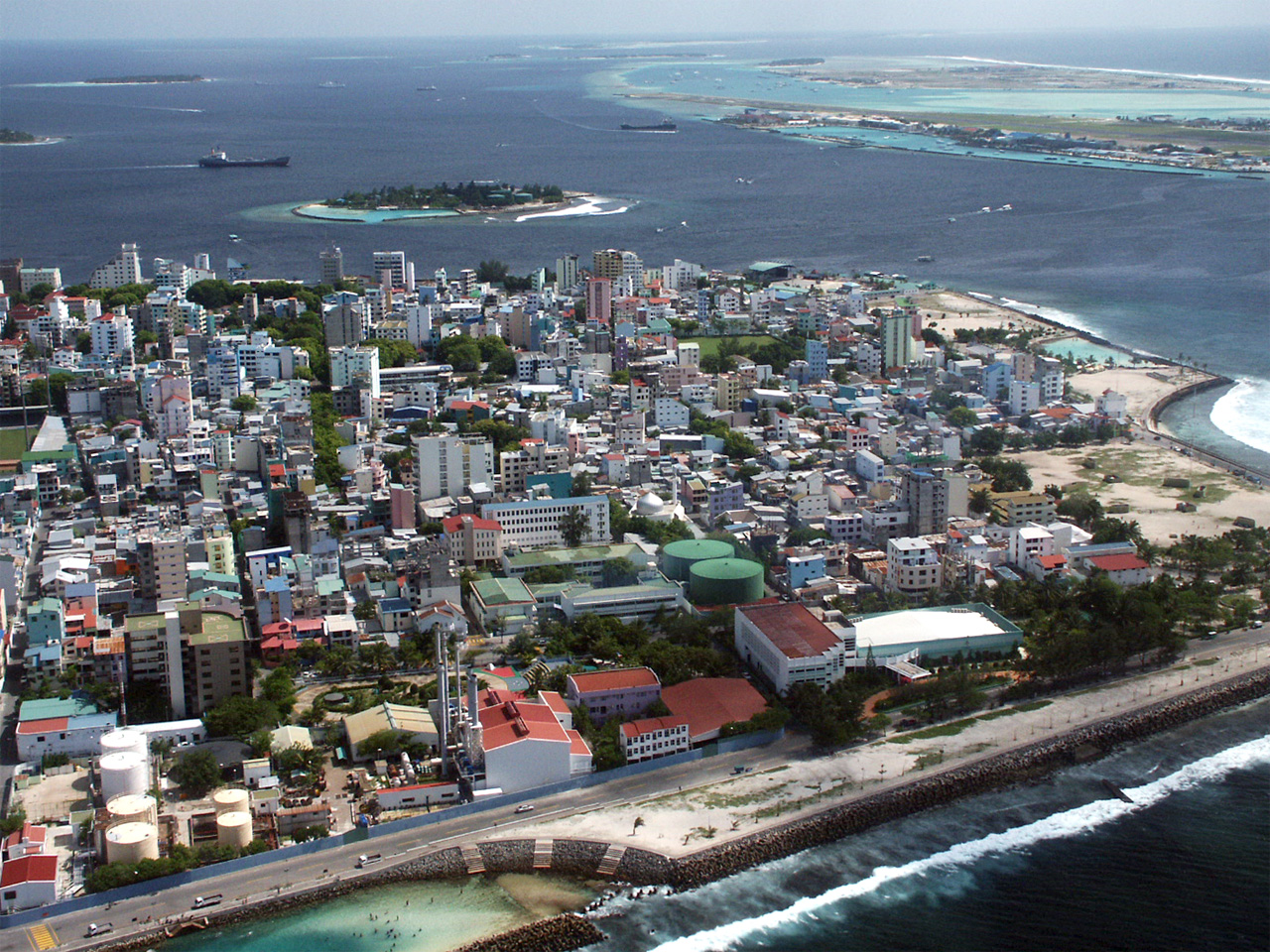
Malé: Capital of Maldives.
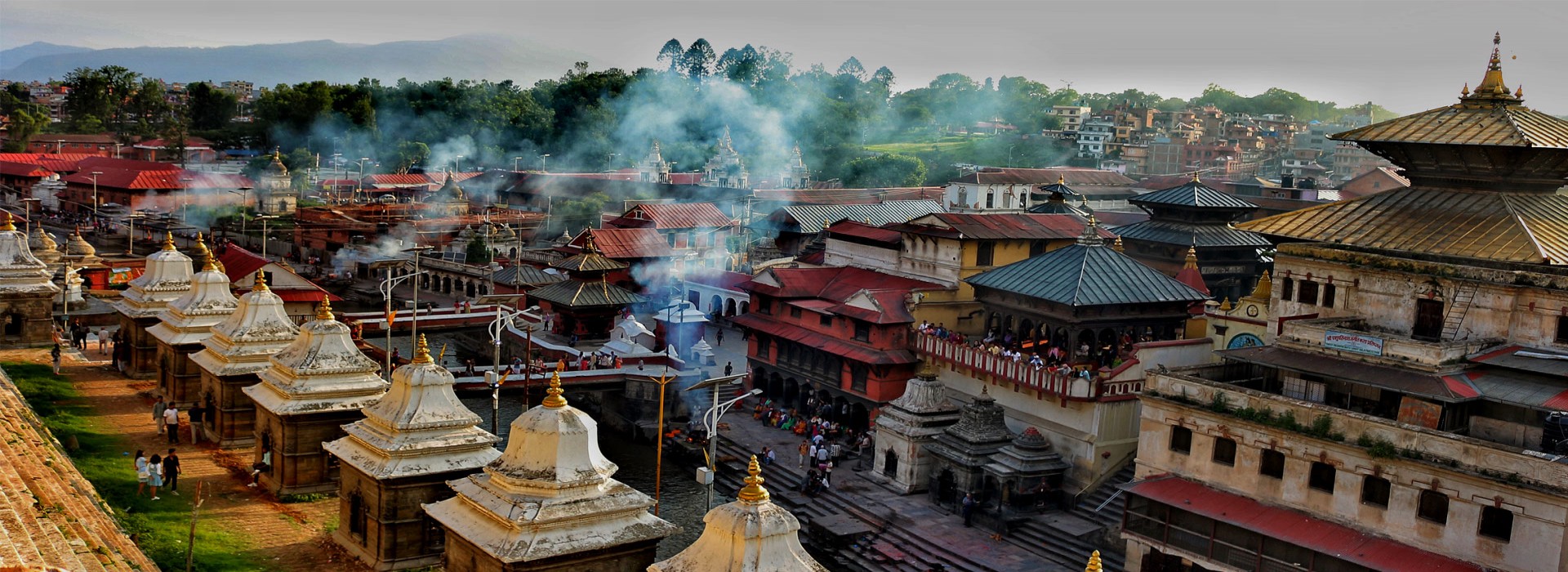
Katmandu: Capital of Nepal.
Modern-day South Asia comprises India, Pakistan, Bangladesh, Sri Lanka, Nepal, Afghanistan, Bhutan, Myanmar and Nepal. It is one of the world’s most densely populated areas, with a population of 1.891 billion, which is almost 25 percent of the world’s total population.
The region also has a vast array of races, religions and languages. These include Hinduism, Islam, Sikhism, Buddhism, Zoroastrianism, Jainism and Christianity. The main languages are Hindi, Urdu, Punjabi, Bengali, Marathi, Nepali, Pali, Sindhi, Balochi, Pashtu, Tamil, Telangu, Guajarati, English and more.
A major part is often referred to as the ‘Indian sub-continent.’ Its present political boundaries were largely marked by the departing British colonialists who ruled the area from the late 18th century till the mid-20th.
For over 5000 years, the region has often moved back and forth from being a tapestry of numerous independent kingdoms and a unified political whole.
2600 BCE till 1900 BCE.

Over 5000 years ago, a Bronze Age civilization in the northwestern region of South Asia was thriving. It was an indigenous, well-organized society, largely settled in areas that today are in Pakistan.
It had its own form of government and religion and a unique language and written script. In the 20th century, archeologists called it the Indus Valley Civilization because it grew along the banks of the mighty Indus River. It is said to have lasted from 2600 BCE till 1900 BCE.

An artist’s depiction of the Indus Valley Civilization.

Tourists at one of the sites of the Indus Valley Civilization near the city of Larkana in Pakistan’s Sindh province.
1500 BCE

Some 3,500 years ago, peoples from an ethnolinguistic group, the ‘Aryans’, began to migrate from Central Asian regions into the sub-continent. The migrations took place across hundreds of years. They began during the decline of the Indus Valley Civilization.

The Aryans came in large groups and initially settled in north-western regions of the sub-continent. With time they relocated near the Ganges Plain and in the northeastern and southern parts of the region. They brought with them their distinct religions and languages. The predominant languages of South Asia today are all considered to be rooted in the languages that the Aryans brought with them.
1750-500 BCE: The Vedic Period

The Vedic Period refers to the time in history from approximately 1750-500 BCE, during which the Aryans settled in the northwestern parts of the sub-continent of what is now northern and eastern India, eastern parts of Pakistan, and most of Bangladesh. The people lived in tribes or small quasi-kingdoms.

The era is known as Vedic because the understanding and information of this age is derived from certain religious scriptures that were composed during this period. These included Rigveda, Mantra texts, Samhita texts, and Brahmana literature.
Most of these scriptures were about rituals and how the priests should conduct them. They also contained names of various deities which were later incorporated into what became to be known as Hinduism.
The texts do not mention the word Hindu in a religious sense. Instead, these scriptures mention ‘Sindhu,’ which is the Indus River.
Also, cow worship is neither mentioned in the scriptures nor was practiced during this period. The scriptures do mention a caste system, but the castes are defined not by birth but on a person’s profession.
600-300 BCE

2,500 years ago, in the late Vedic age, a set of sixteen kingdoms emerged. These gave rise to new and permanent areas of settlements called ‘states’ or ‘janapadas.’ Iron production played a crucial role in expanding the territorial states of the region. These expansions helped some of these ‘janapadas’ turn into large states or ‘mahajanapadas.’

It was during the time of the janapadas that Gautama Buddha was born in what is present-day Nepal. After achieving ‘enlightenment’ he preached a highly esoteric yet simple faith which many historians believe was a reaction against the growing powers of Vedic Brahman priests and the caste system.
500 BCE: The Word ‘Hindu’ Is Formulated.

In 500 BCE, the Persians under King Cyrus the Great invaded (from present-day Iran) the northwestern regions of the sub-continent. The Persian Empire (and/or the Achaemenid Empire) held most of regions of what today is Pakistan; whereas the janapadas remained independent.
This was also the period in which the word ‘Hindu’ was formulated. This is what the Persians called River Indus. They pronounced the word ‘Sindhu’ (mentioned in the Rigveda) as ‘Hindu.’ By this they meant the river and the people who lived on the banks of this river. The Persians were Zoroastrians and they brought this faith with them to the sub-continent.
326 BCE

The Greek warrior-king, Alexander the Great invaded the sub-continent (through present-day Afghanistan) after defeating the mighty Persian Empire. Alexander conquered regions of what today are the KP, Punjab and Sindh provinces in Pakistan. The other major power in South Asia at the time was the Nanda Empire in Bengal.
265 BCE

After Alexzander’s retreat, one Chandragupta Maurya raised an army and vanquished the Nanda Empire. He set up his own Maurya Empire. The empire lasted from 321 BCE till 298 BCE.
It was under the Maurya Empire that, for the first time, almost all of South Asia, especially the sub-continent, was brought and unified under a single empire.

Asoka was the mightiest Mauryan monarch. The Mauryans were Bahamans, but Chandragupta is said to have converted to Jainism, and Asoka to Buddhism. In fact, it was under Asoka that Buddhism became a major religion in the region.
2nd Century CE.

1,800 years ago (2nd Century CE) South Asia was divided between various kingdoms. Much of what is today Afghanistan and Pakistan was under the Kushan Empire. The Kushan people originated from China. It was a syncretic empire that fused Hellenistic Greek culture with Buddhism. Rest of the region was ruled by various Hindu empires.

Coins issued by the iconic Kushan kings, Kanishka.
5th Century CE

From the mid-3rd Century till the 5th, the Gupta Empire ruled much of the sub-continent. Rest of the region was ruled by smaller fiefdoms. Hinduism, Buddhism and Jainism were the major religions in the region at the time -- even though by now orthodox Hinduism that had evolved from Vedic Brahmanism had rebounded from the beating it had received from the spread of Buddhism.

A Gupta-era painting showing a man and a woman (possibly lovers and/or husband-wife).
7th Century CE

By the 7th Century, a large portion of the sub-continent in the north and north-west was ruled by Pushyabhuti/Harsha Empire. The dynasty was religiously eclectic and included sun worshippers, Buddhists and a form of Hinduism shaped by the cult of the Vedic Hindu deity, Shiva. Rest of the region was in the hands of smaller dynasties.
700 CE

www.thomaslessman.com/History/ or www.WorldHistoryMaps.info
South Asia map a decade before Arab Umayyad general, Muhammad Bin Qasim’s invasion of Sindh in 710 CE. Like the rest of the region, Sindh at the time was being ruled by a Brahman dynasty. Qasim, however, did not march further and Muslim influence in South Asia remained limited to Sindh.
14th Century

In the 12th Century, the subcontinent was invaded by Turkic soldiers and slaves who had been converted to Islam and had risen to become rulers. For over 300 years, Turkic dynasties ruled over a vast area of the region – even though the southern regions of the sub-continent remained in the hands of Hindu kingdoms. The five major Muslim dynasties during this period ruled from Delhi in northern India (therefore the name ‘Delhi Sultanate’).

During the rule of Delhi Sultanate, the first major synthesis of traditional sub-continental religious and social cultures (Hindu, Buddhist, Jain, and Zoroastrian) and medieval Muslim culture took place. Sufism also made a prominent entry into the region.

The Delhi Sultanate reached the panicle of its power during the reign of Muhammad Tughlaq. He is often referred to as a mercurial man and the ‘lunatic visionary’ mainly due to some of his economic schemes which latter historians believe were ahead of his time.
1525 CE

South Asia on the eve of Mughal invasion. The Delhi Sultanate had considerably shrunk, replaced by various Hindu and rebel Muslim kingdoms.
17th Century

In the 16th Century, Muslim chieftains from Central Asia rode into the sub-continent from Afghanistan to establish the Mughal Empire. By the late 17th Century, the Mughals had unified the region into a political whole just as the Mauryans had done in 265 BCE. Akbar the Great and Aurangzeb are considered to be the mightiest Mughal emperors.

The synthesis between indigenous South Asian cultures and Muslim culture accelerated greatly during the Mughal era. India was considered to be one of the richest countries during Mughal rule. This attracted the attention of European powers who began to send envoys to Mughal courts.
Islam and Hinduism thrived until the coming to power of the last major Mughal king, Aurangzeb. Sikhism emerged as a religion, and Christianity began to find converts among Indians. Sufism in the region reached its peak. There were great strides made in administrative politics, economics, the arts and cuisine.
1764 CE

The sub-continent map on the eve of British conquest. By the mid-18th Century, the Mughal Empire had shrunk and regions once under Mughal rule fell in the hands of Hindu, Sikh and non-Mughal Muslim domains.
1914 CE

By 1914, almost all of South Asia had come under the rule of the British.

Even though the British practiced a secular brand of politics, Christianity grew two-fold in India during British rule.

The British introduced modernity in India by remodeling its schools, politics, economics and judiciary.

After the 1930s onward, tensions and violence between Muslims, Hindus and Sikhs intensified.
August 1947

South Asia in August 1947. As the British retreated from the region, they tried to address the growing ‘communal violence’ in India by partitioning it. The Muslim-majority areas became the Dominion of Pakistan and the Hindu-majority regions became the Indian Union. The British monarch was accepted as the figurative head of state by both the regions.
Some Muslim ‘princely states’ within India decided to remain independent but were absorbed into India. The Muslim-majority region of Kashmir was ruled by a Hindu maharaja. He first wanted to remain independent, but soon decided to merge Kashmir with India.
Goa in India remained a domain of the Portuguese till 1961.

Front page of DAWN on the day after Pakistan came into being.

Front page of Hindustan Times.
2020 CE

South Asia today consists of independent republics of India, Pakistan, Nepal, Burma (Myanmar), Bhutan, Afghanistan, Sri Lanka, Maldives and Afghanistan. Till 1971, Bangladesh was part of Pakistan but broke away to become a separate country. Kashmir remains to be a disputed area between India and Pakistan.

New Delhi: Capital of India.

Islamabad: Capital of Pakistan.

Dhaka: Capital of Bangladesh.

Kabul: Capital of Afghanistan.

Colombo: Capital of Sri Lanka.

Thimphu: Capital of Bhutan.

Naypyidaw: Capital of Myanmar.

Malé: Capital of Maldives.

Katmandu: Capital of Nepal.
